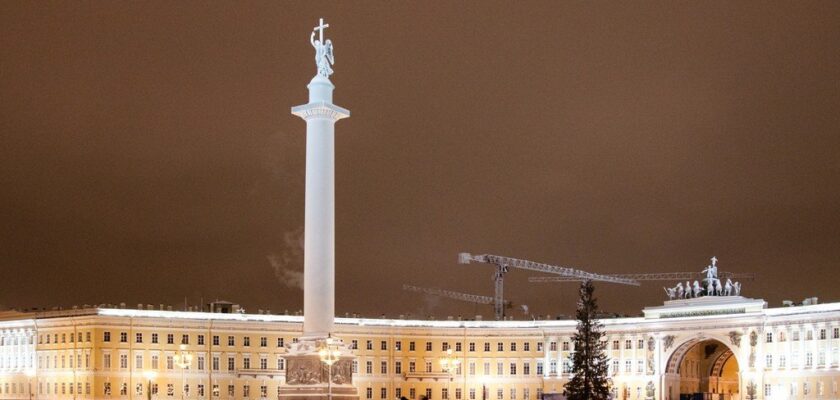Palace Square in St. Petersburg
Palace Square is one of the most beautiful squares in the world, a unique architectural ensemble and a witness of many epochal events in the history of Russia. This huge (about 60 thousand square meters) square is one of the main attractions of St. Petersburg, must be visited by all tourists. Here, at different moments of the city’s existence, both lavish celebrations and dramatic events took place. It was from here that revolutionary soldiers and sailors stormed the Winter Palace on the night of October 25, 1917. In Soviet times, military parades and demonstrations were organized on the square. And nowadays Palace Square remains the main venue for city holidays, rallies and concerts. On New Year’s Eve, City Day, during school graduation parties and other significant occasions crowds of merrymaking people gather here. And on ordinary days, tourists, skateboarders and city youth gather here.

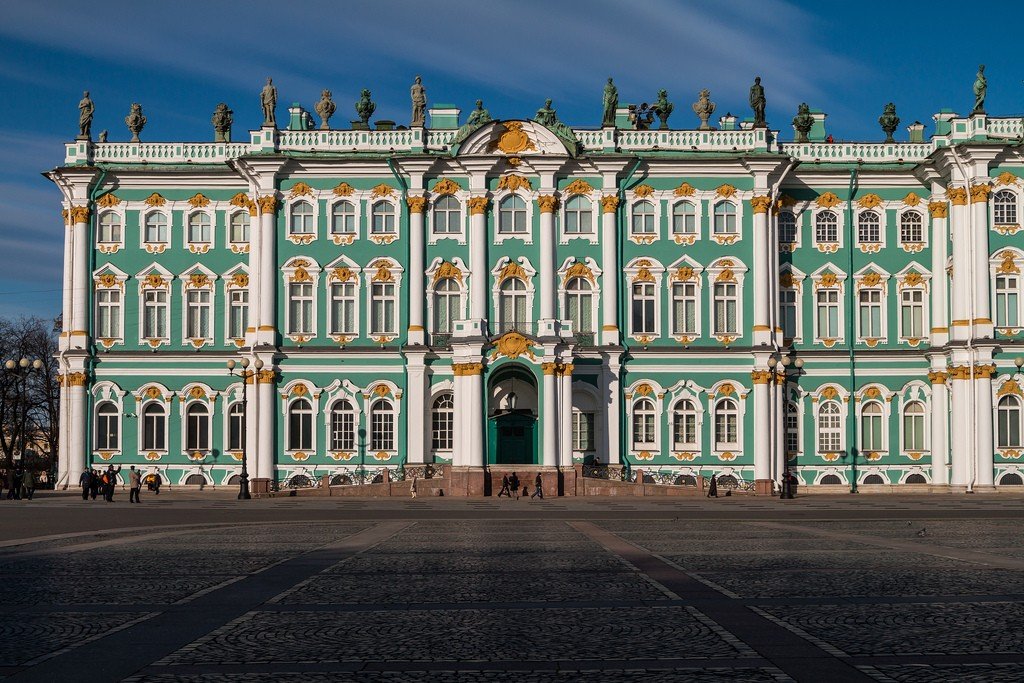
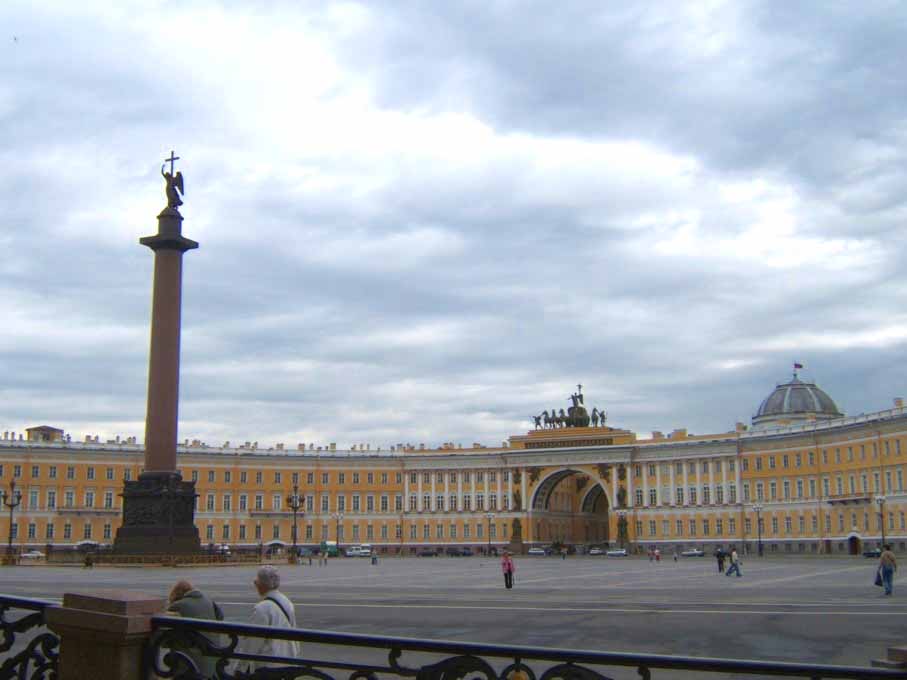
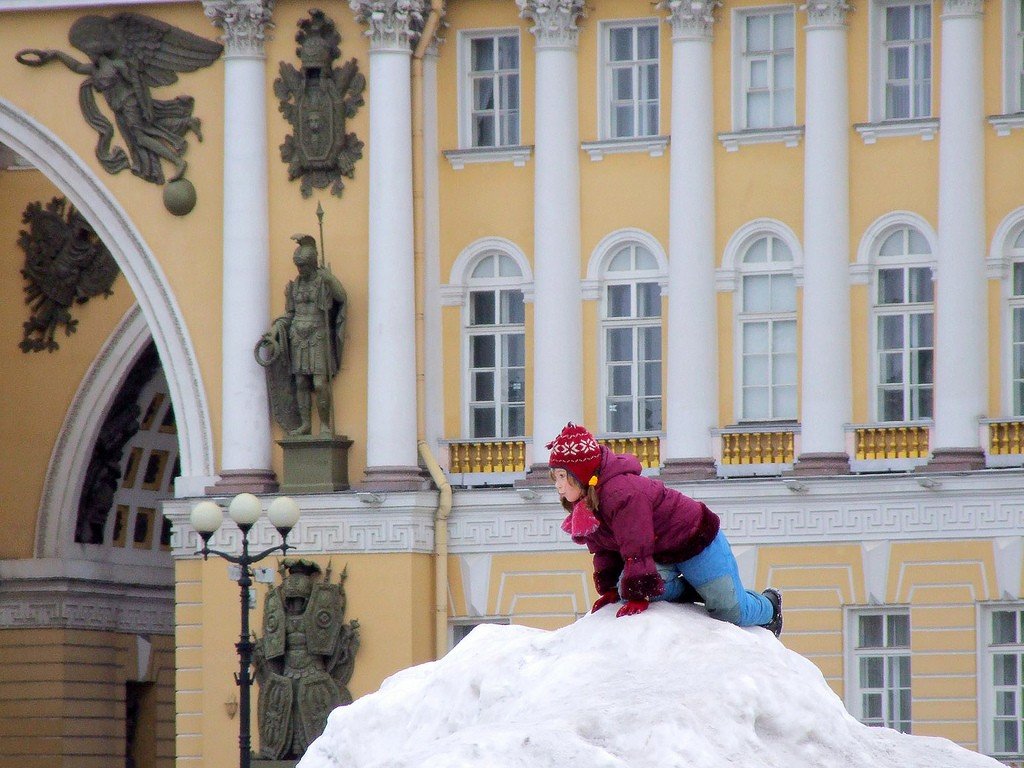
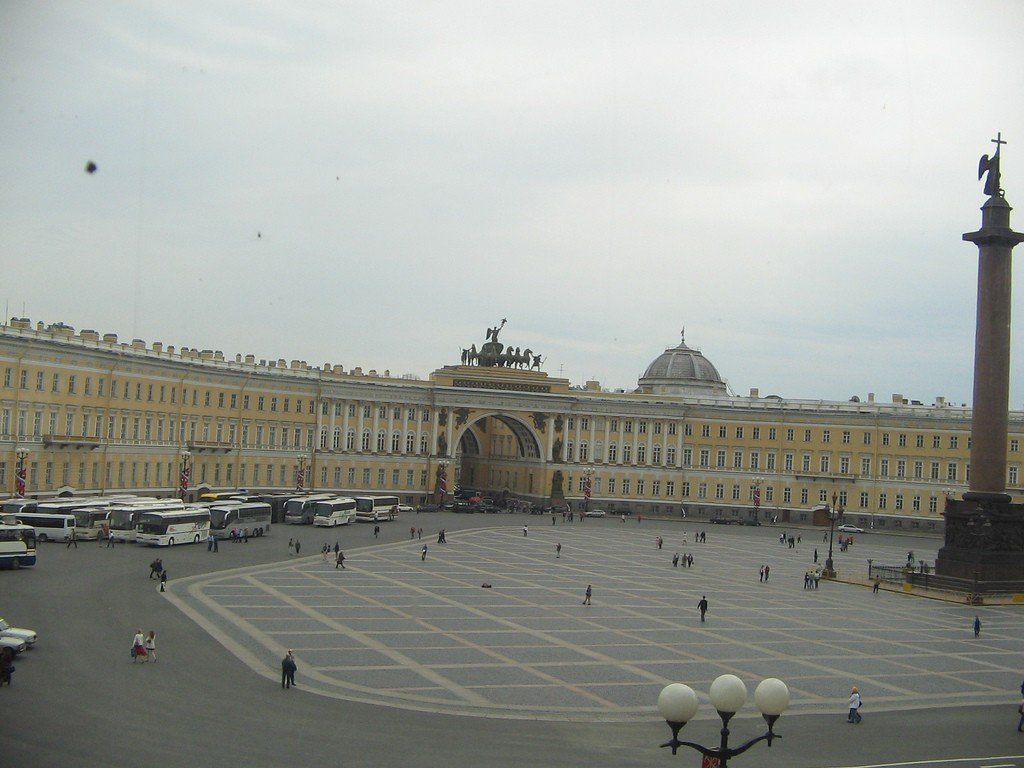
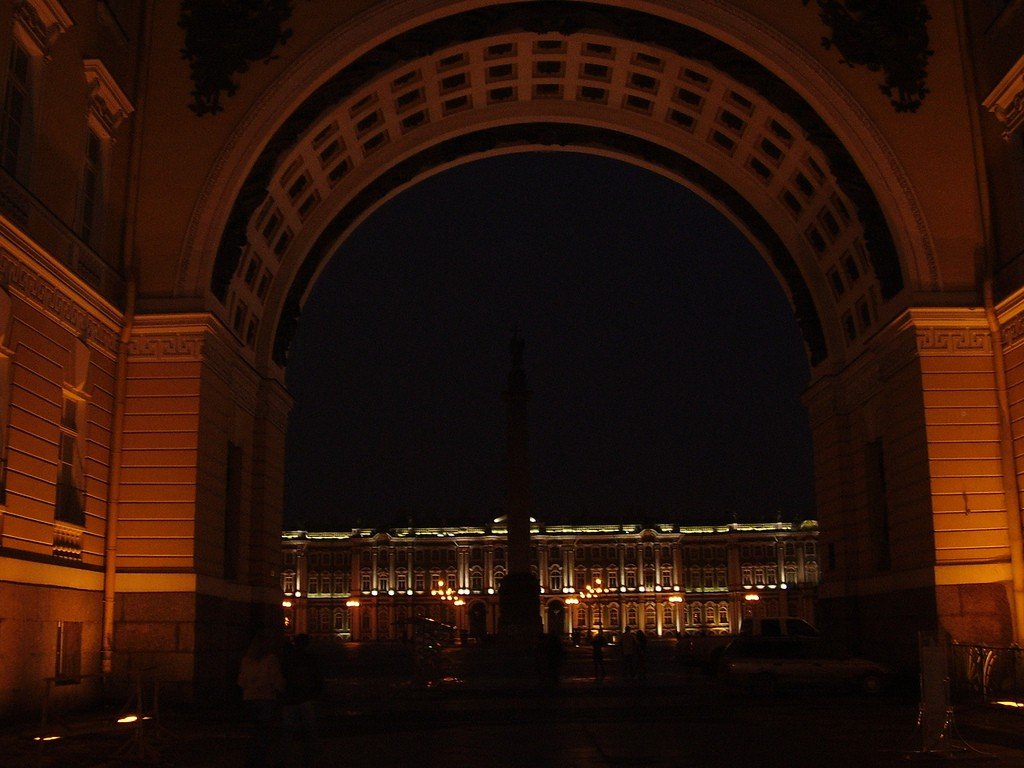
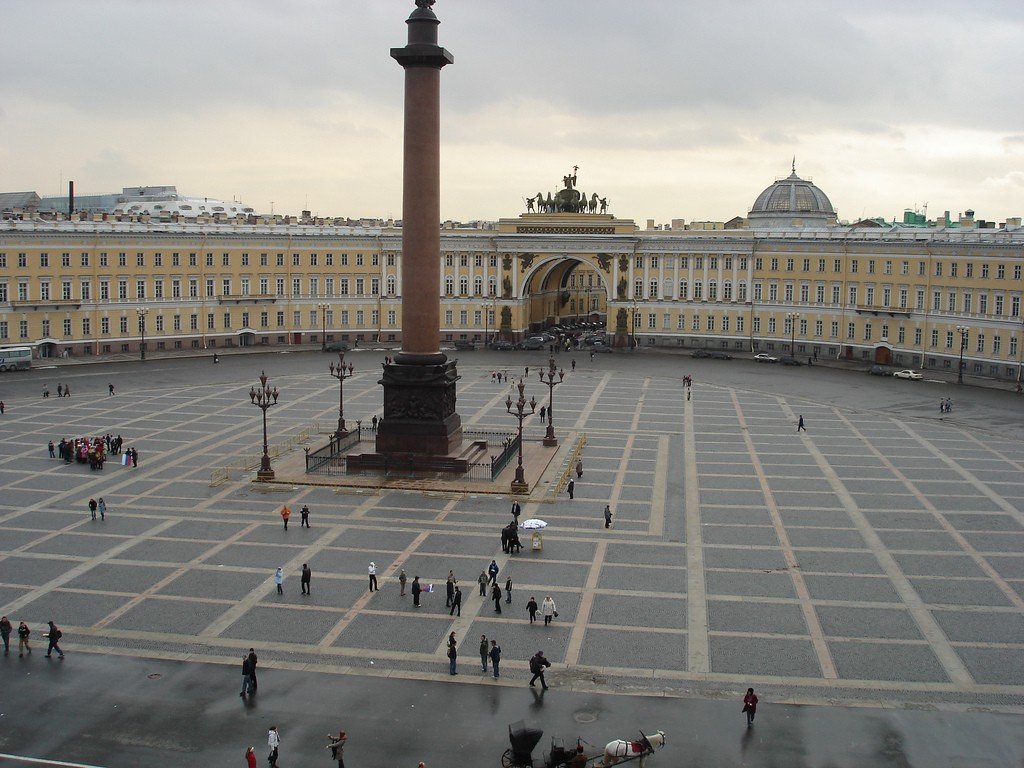
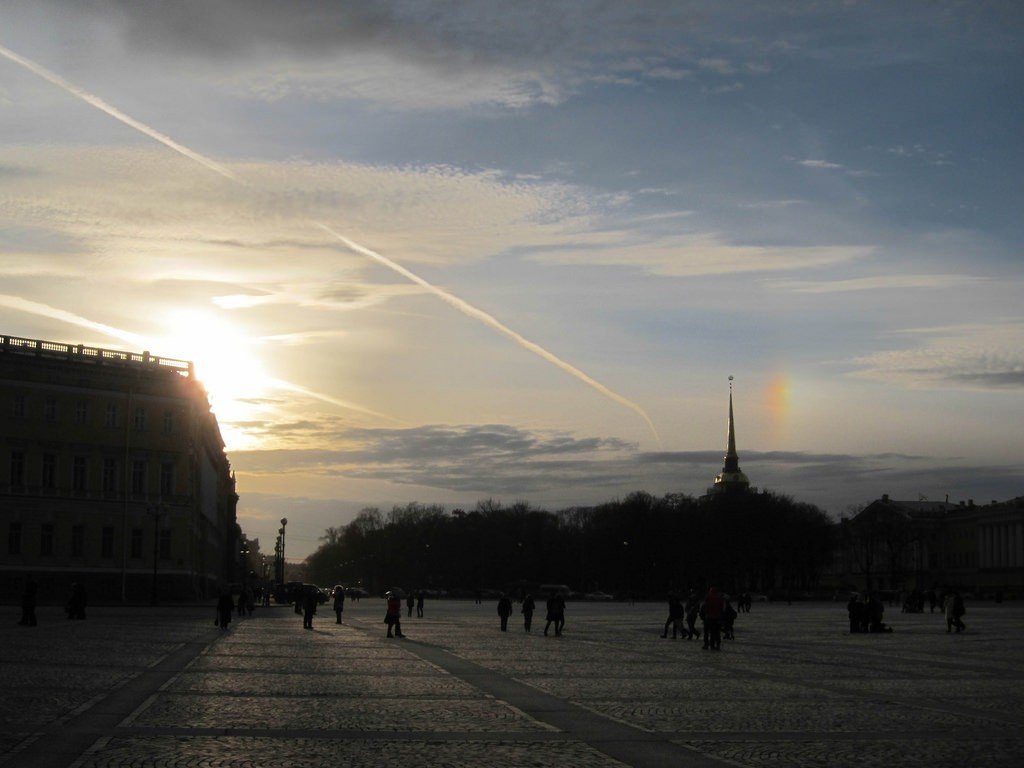
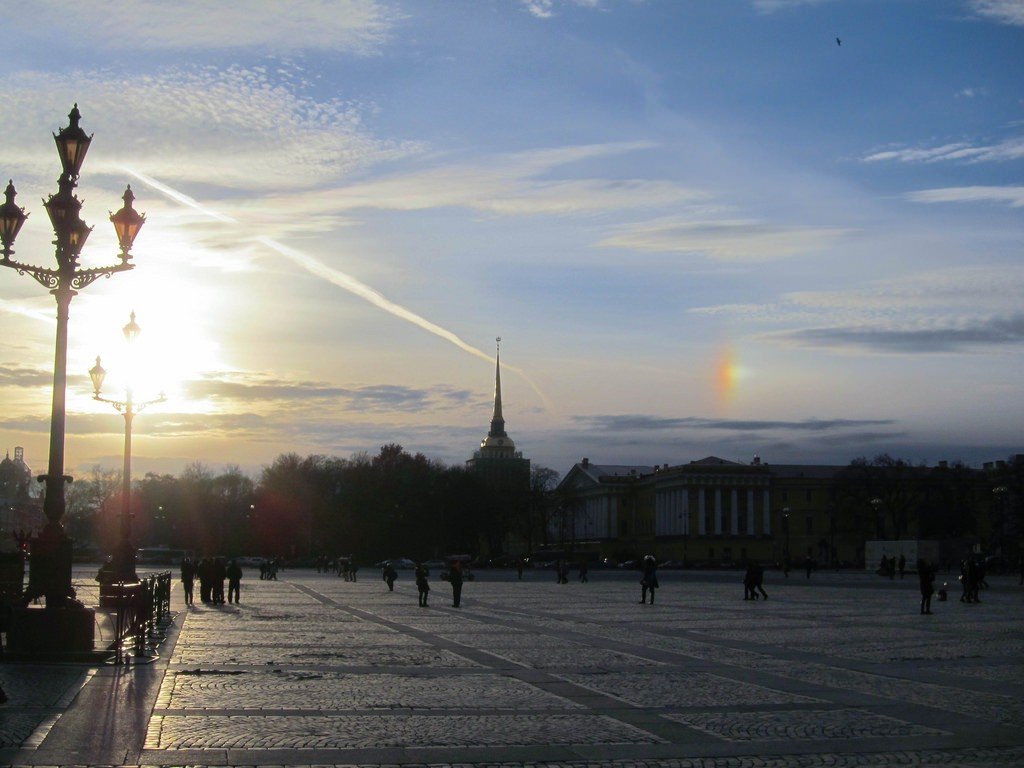
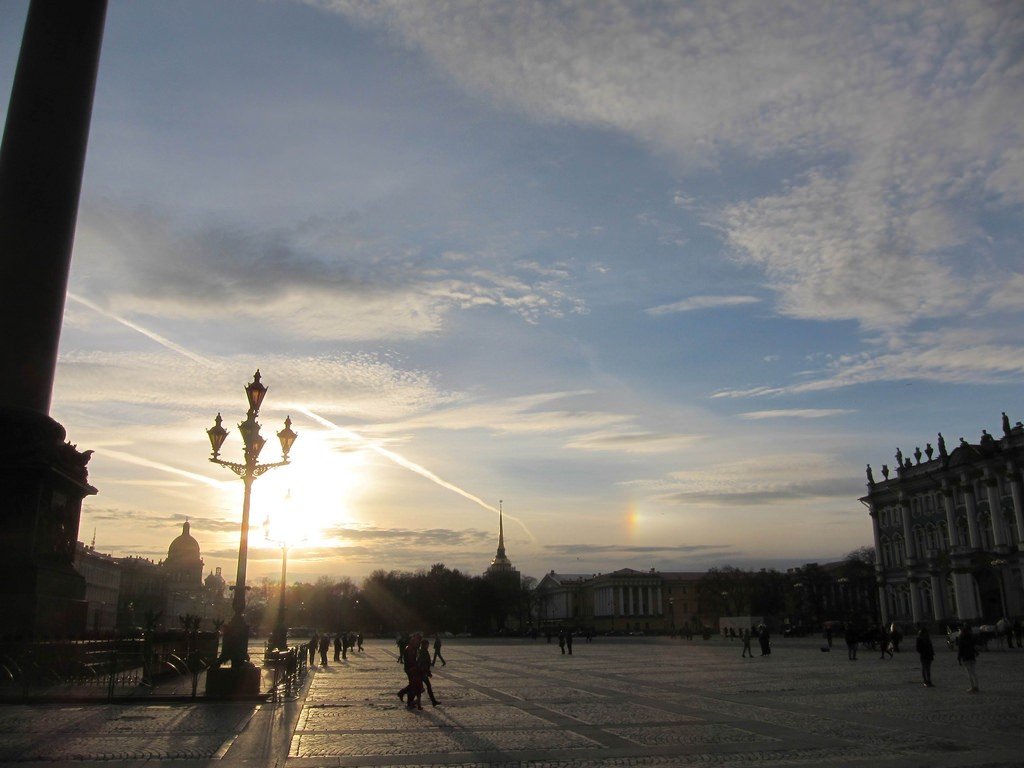
General information
Palace Square stuns people who see it for the first time with its grandeur and austere perfection. Here as nowhere else in the city you can feel the spirit of imperial St. Petersburg. In the center of the square stands the Alexander Column, built by architect Auguste Montferrand (a Frenchman, by the way!) in honor of Russia’s victory over Napoleon. The column, cut from a granite monolith, is kept on the pedestal solely by means of precise calculation and its own enormous weight (about 600 tons). It is not by chance that in the first years after its installation many citizens of St. Petersburg avoided the column – no matter what, it will fall.
.
At the top of the Alexander Column is a bronze figure of an angel trampling a snake with a cross. It is said that the face of the angel sculptor Orlovsky gave a portrait resemblance to Emperor Alexander I, and the head of the snake resembles the face of Napoleon. Whether this is true or not, it is difficult to assess from below – the column is very high. It was specially erected higher than the Vendome Column in Paris, built in honor of Napoleon’s victories. The result was the highest triumphal column in the world (47.5 meters).
.
In the 19th century, the following epigram about the sculpture crowning the column ran through the city:
.In Russia breathes all the military craft, And the Angel makes on guard with a cross.
.In 1925, on the anniversary of Lenin’s death, the new Soviet government had the idea of replacing the figure of the angel on the Alexander Column with a ten-meter bronze statue of Lenin. The People’s Commissar of Education Lunacharsky condemned this project. He sent a letter personally to the chairman of the City Council Zinoviev, in which he delicately but convincingly argued the ridiculousness of this idea. Irritated Zinoviev put the following resolution on it: “To hell with them. Leave them the column with the ’empire’ angel.” That was the end of the matter, and the empire angel with a cross still carries his watch over the city.
.
The main structure of Palace Square is, of course, the Winter Palace, the main residence of the Russian emperors. This grandiose building in the form of a powerful carriage with an inner courtyard, richly decorated facades and sculptures on the roof, was erected in the mid-18th century for Empress Elizabeth Petrovna by the famous Italian architect Francesco Bartolomeo Rastrelli.
The Winter Palace was built by the famous Italian architect Francesco Bartolomeo Rastrelli.
This vivid example of the Russian Baroque style, so much liked by Peter’s daughter for its luxury and splendor, became the fifth winter royal house. All the previous ones were too small and not grand enough for the Russian monarchs. The first Winter Palace, built for Peter the Great, was located on the bank of the Winter Canal, on the site of the present-day Hermitage Theater. Next to it was the palace of Admiral General Apraksin, which according to his will went to Emperor Peter II. Tsarina Anna Ioannovna ordered additions to it and lived in it for some time, until Rastrelli built a new Winter Palace for her, which seemed cramped to the next Empress Elizabeth Petrovna. So in 1754 Rastrelli laid the new Winter Palace in its place. Elizabeth rushed the architect, but construction dragged on for almost ten years.
.
The new Winter Palace, which was created, as the decree on its construction stated, “for the unified glory of all Russia”, became a true masterpiece of Rastrelli’s work. Its solemn and elegant exterior was combined with the lavish decoration of enfiladed halls and rooms richly decorated with gilded carvings and mirrors.
.
Elizabeth died before the finishing work was completed, and her nephew Peter III was the first to enter the Winter Palace. However, he did not last long in power and had little time to develop his new residence. The first real owner of the palace was his wife Catherine II, who took the Russian throne after the overthrow of her hated husband. The new empress ordered the baroque interiors of the palace to be remodeled in the classical style, as by this time aesthetic tastes had changed and interest in baroque art had begun to fade. Classicism, on the other hand, was rapidly coming into fashion thanks to archaeological excavations in Pompeii, Herculaneum and other Italian cities. Later, on Catherine’s orders, the buildings of the Small and Great Hermitage, as well as the Hermitage Theater, were built next to the Winter Palace, and later, under Catherine’s grandson Nicholas I, the New Hermitage.
.
In 1837, a grandiose fire destroyed the interior of the Winter Palace. The best Russian architects and builders of the time revived the palace in a very short period of time (just over a year), preserving the author’s main ideas. At the same time, the facade of the building and some interiors were left in their original form, but the time was different, new tastes triumphed, so the palace has a lot of new, also magnificent interiors, which have survived to this day.
.The Winter Palace is the largest and most luxurious palace in the city, one of the most opulent symbols of Russian autocracy. Imagine, it has 1,050 rooms, 117 staircases, 1,886 doors, 1,945 windows! Its height (22 m) in the reign of Nicholas I was recognized as a standard in urban planning. It was forbidden to erect higher houses.
.
Zhukovsky wrote: “The Winter Palace as a building, as a royal dwelling, may have had nothing like it in the whole of Europe. With its enormity, its architecture, it represented a mighty nation that had so recently entered the milieu of educated nations, and with its inner splendor it reminded us of the inexhaustible life that boiled in the interior of Russia…. The Winter Palace was for us the representative of everything domestic, Russian, our own.”
.
The Winter Palace was home to Russian monarchs and their families, as well as a huge staff of servants. It hosted magnificent festivals and balls. The palace served as the official residence of the Russian emperors until the February Revolution of 1917, after which the ministers of the Provisional Government settled there. On October 25 (November 7), 1917, on the signal given by the cannon of the cruiser Aurora, the palace was stormed by revolutionary sailors and soldiers, and the ministers were arrested. The palace was nationalized and later turned into a museum. The Winter Palace is now the main part of the State Hermitage Museum.The building of the Guards Corps Headquarters, which closes the square from the east, was built by the architect Alexander Bryullov, brother of the painter Karl Bryullov, author of the famous painting The Last Day of Pompeii (you can see it in the Russian Museum). During important holidays, a huge panel is usually placed on the facade of this building, which has already become a traditional part of the parade decoration of the city.
.
Palace Square is connected by the Singing Bridge (it is famous for its unusually beautiful lace-like fence) to the Moika embankment.
.